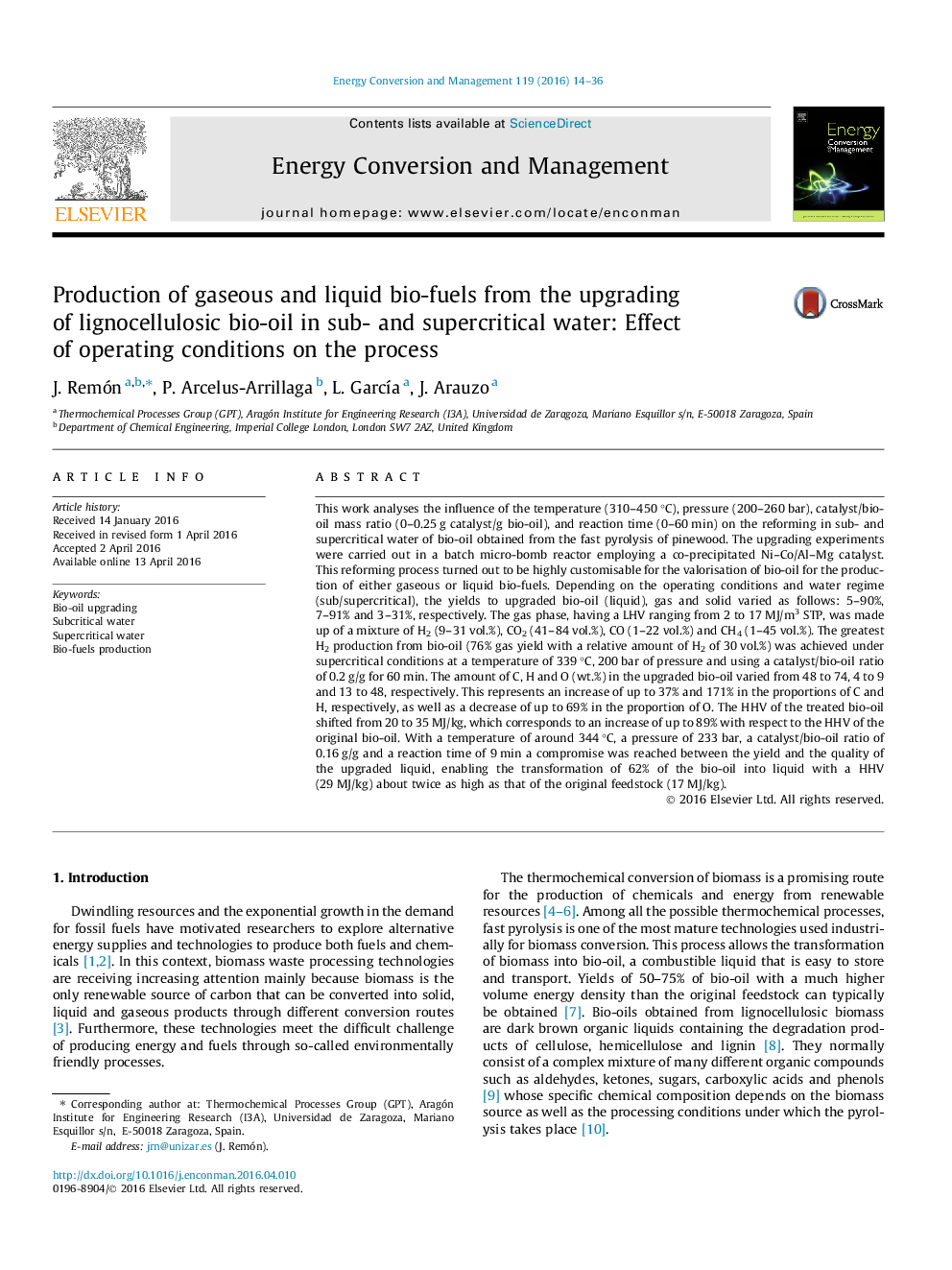| کد مقاله | کد نشریه | سال انتشار | مقاله انگلیسی | نسخه تمام متن |
|---|---|---|---|---|
| 765181 | 1462843 | 2016 | 23 صفحه PDF | دانلود رایگان |
• Bio-oil valorisation in sub-/supercritical water: a promising route for bio-fuels.
• Effect of P, T, t, catalyst and water regime on bio-oil upgrading studied in depth.
• Tailor-made route for H2, CH4 and liquid bio-fuel production in a single process.
• Upgraded liquid with high proportions of C and H, higher HHV and less O content.
This work analyses the influence of the temperature (310–450 °C), pressure (200–260 bar), catalyst/bio-oil mass ratio (0–0.25 g catalyst/g bio-oil), and reaction time (0–60 min) on the reforming in sub- and supercritical water of bio-oil obtained from the fast pyrolysis of pinewood. The upgrading experiments were carried out in a batch micro-bomb reactor employing a co-precipitated Ni–Co/Al–Mg catalyst. This reforming process turned out to be highly customisable for the valorisation of bio-oil for the production of either gaseous or liquid bio-fuels. Depending on the operating conditions and water regime (sub/supercritical), the yields to upgraded bio-oil (liquid), gas and solid varied as follows: 5–90%, 7–91% and 3–31%, respectively. The gas phase, having a LHV ranging from 2 to 17 MJ/m3 STP, was made up of a mixture of H2 (9–31 vol.%), CO2 (41–84 vol.%), CO (1–22 vol.%) and CH4 (1–45 vol.%). The greatest H2 production from bio-oil (76% gas yield with a relative amount of H2 of 30 vol.%) was achieved under supercritical conditions at a temperature of 339 °C, 200 bar of pressure and using a catalyst/bio-oil ratio of 0.2 g/g for 60 min. The amount of C, H and O (wt.%) in the upgraded bio-oil varied from 48 to 74, 4 to 9 and 13 to 48, respectively. This represents an increase of up to 37% and 171% in the proportions of C and H, respectively, as well as a decrease of up to 69% in the proportion of O. The HHV of the treated bio-oil shifted from 20 to 35 MJ/kg, which corresponds to an increase of up to 89% with respect to the HHV of the original bio-oil. With a temperature of around 344 °C, a pressure of 233 bar, a catalyst/bio-oil ratio of 0.16 g/g and a reaction time of 9 min a compromise was reached between the yield and the quality of the upgraded liquid, enabling the transformation of 62% of the bio-oil into liquid with a HHV (29 MJ/kg) about twice as high as that of the original feedstock (17 MJ/kg).
Journal: Energy Conversion and Management - Volume 119, 1 July 2016, Pages 14–36
